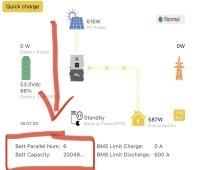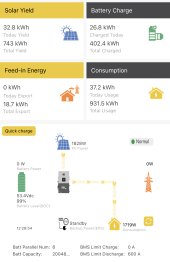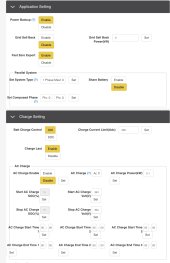ksmithaz1
Solar / EV Junkie
I don't see it on monitor.eg4electronics. I just walked over into my 105F room, where they are mounted a foot away from each other and I see the on the display the leftmost reporting 65/74/6x.. and the right one reporting 56/65/5x... for T0-T4.
I just realized the fans appear to blow *down.* At some level it's venting but I've spent a lot of time on cooling in data centers, and you always run the hot air out the top, cold air in from the bottom. Maybe I'm feeling reflected air or something? I will re-check this when I'm charging the car tomorrow. Can anyone else confirm or deny this to be the case? My plan is/was to put a big vent fan in the roof. That might be sub-optimal if it's fighting the airflow of the unit.
I just realized the fans appear to blow *down.* At some level it's venting but I've spent a lot of time on cooling in data centers, and you always run the hot air out the top, cold air in from the bottom. Maybe I'm feeling reflected air or something? I will re-check this when I'm charging the car tomorrow. Can anyone else confirm or deny this to be the case? My plan is/was to put a big vent fan in the roof. That might be sub-optimal if it's fighting the airflow of the unit.








